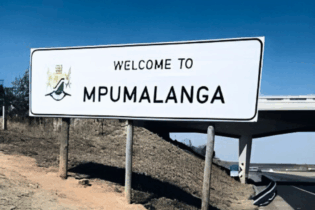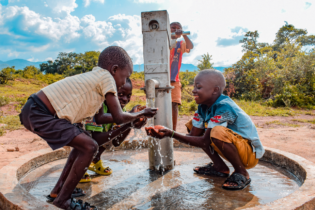The Department of Water and Sanitation (DWS) is closely monitoring the Vaal Dam which has drastically improved this week, taking a giant leap from last week’s 24.3% to 46.2% yesterday. According to near real time data, the levels have again significantly increased overnight to 50.53%.
The Departmental Spokesperson, Ms Wisane Mavasa said the Vaal Dam has, for the past few months, been on a downward spiral with the Department making plans to release water from the Sterkfontein Dam into the Vaal Dam to augment its levels when it reaches 18% in volume. However, this will no longer be necessary as the Vaal Dam is rapidly rising due to the heavy rainfall experienced this week in Gauteng, and other provinces of North West, Free State, Limpopo, Mpumalanga, and KwaZulu-Natal. “We are now clear of the risk for the Vaal Dam dropping below its minimum operating level of 18%. The dam had experienced continuous decline over the past few months due to elevated temperatures which have led to increased evaporation losses, and the low inflows into the dam due to lack of rainfall in the Vaal catchment. The current dam level is now plotting above 50% and there is a good inflow because of recent rainfall in the catchment. There is therefore no more a need for water release from Sterkfontein Dam to support Vaal Dam,” said Ms Mavasa. The rising of the dam levels has also boosted the Integrated Vaal River System that provides water to Gauteng province and to key industries within the province, that has shot up from 71.4% to 79.4% this week. Recent rainfall has significantly improved surface water storage levels in the country’s dams with 79.8% this week, a huge increase as compared to last week’s 74.5%. Although the heavy and disruptive rainfall has resulted in localised flooding in those provinces, it has also boosted their Water Supply Systems significantly. Mpumalanga and KwaZulu-Natal have also experienced the highest upsurge with 10.2% respectively. Mpumalanga shot up from 82.9% to 93.1% this week, while Kwazulu-Natal from 81.0% to 91.2%. Limpopo province has shot up by 9.4% this week, rising from 73.2% to 82.6%. North West rose from last week’s 64.7% to 72.5% this week, a staggering 7.8% increase. While Free State province also saw a considerable increase from last week’s 68.5% to 72.6% this week. Rainfall in parts of the above-mentioned provinces has exceeded 150 mm, while parts of Limpopo, Mpumalanga, and KwaZulu Natal received more than 200 mm. There is an expectation of isolated to scattered rainfall over central and eastern areas of the country, particularly in Free State, Limpopo, Mpumalanga, and KwaZulu-Natal provinces this week, as a result, surface water storage in these areas is expected to improve further next week. However, the Department of Water and Sanitation would like to caution the residents in those provinces to be careful during the heavy rains. Ms Mavasa has urged residents to avoid water bodies, particularly when the rain can be disruptive.
“We appeal to members of the public to stay away from the rivers, lakes and dams, especially in the low-lying areas. Pedestrians should avoid crossing bridges and motorists should also refrain from driving through flooded areas, even though the water seems to be shallow. Water can be deadly during the floods and should not at all be underestimated. Let us all keep safe and stay indoors if possible,” said Ms Mavasa.The storage capacity in the country’s major Water Supply Systems (WSS) has also shown a good improvement, with Luvuvhu WSS in Limpopo, serving Thohoyandou have drastically improved from 88.4% to 97.3% this week. Polokwane WSS has also escalated from 82.2% to 98.6% this week. Crocodile West WSS which serves Tshwane in Gauteng and Rustenburg in North West, has improved from 86.4% to 92.5% this week. Crocodile East WSS serving Nelspruit, KaNyamazane, Matsulu, Malelane and Komatipoort in Mpumalanga shot up from 60.1% to 73.8% this week. In KwaZulu-Natal, the water supply systems have also increased this week, with UMgeni moving from 86.8% to 88.3%, and uMhlathuze from 91.5% 93.6%. Bloemfontein WSS in the Free State, which serves Bloemfontein, Botshabelo and Thaba Nchu has slightly dropped from 69.9% to 69.6% this week. Despite the drastic improvements in water levels due to the recent rainfall in some parts of the country, some provinces have dropped but still at high levels. Northern Cape province dropped from 72.9% to 67.8% this week. The province’s WSS has slightly dropped, with Orange WSS which supplies the Northern and Eastern Cape provinces moving from 74.0% to 73.8%. The water levels in the Eastern Cape are stable, slightly dropping from 81.7% to 81.4%. Algoa WSS which supplies Nelson Mandela Bay Metro, Sarah Baartman District, Kouga Local Municipality and Gamtroos Irrigation, has also slightly dropped from 81.2% to 80.2% this week. Butterworth Water Supply System has remained unchanged this week with 97.8%, Amathole WSS is stable at 98.5% this week. The system has a total of six dams which serve Bhisho, Buffalo City and East London. Klipplaat WSS which serves Chris Hani District Municipality has also dropped from 90.4% to 89.1%. Western Cape water levels have also dropped from 83.0% to 80.9%, with Cape Town WSS also dropping from 88.0% to 85.9% this week. Although the surface water storage capacity has improved in the majority of our dams in most provinces this week, DWS continues to call on the citizens to continue to use water sparingly.








